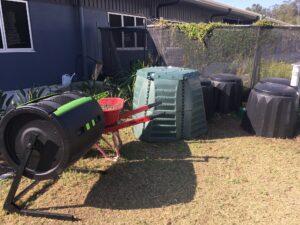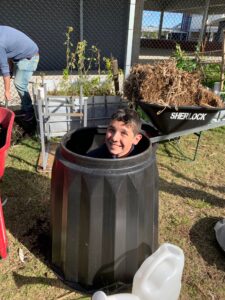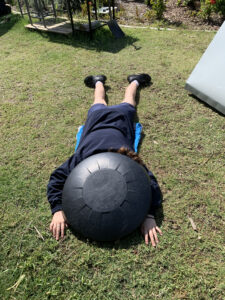Table of contents
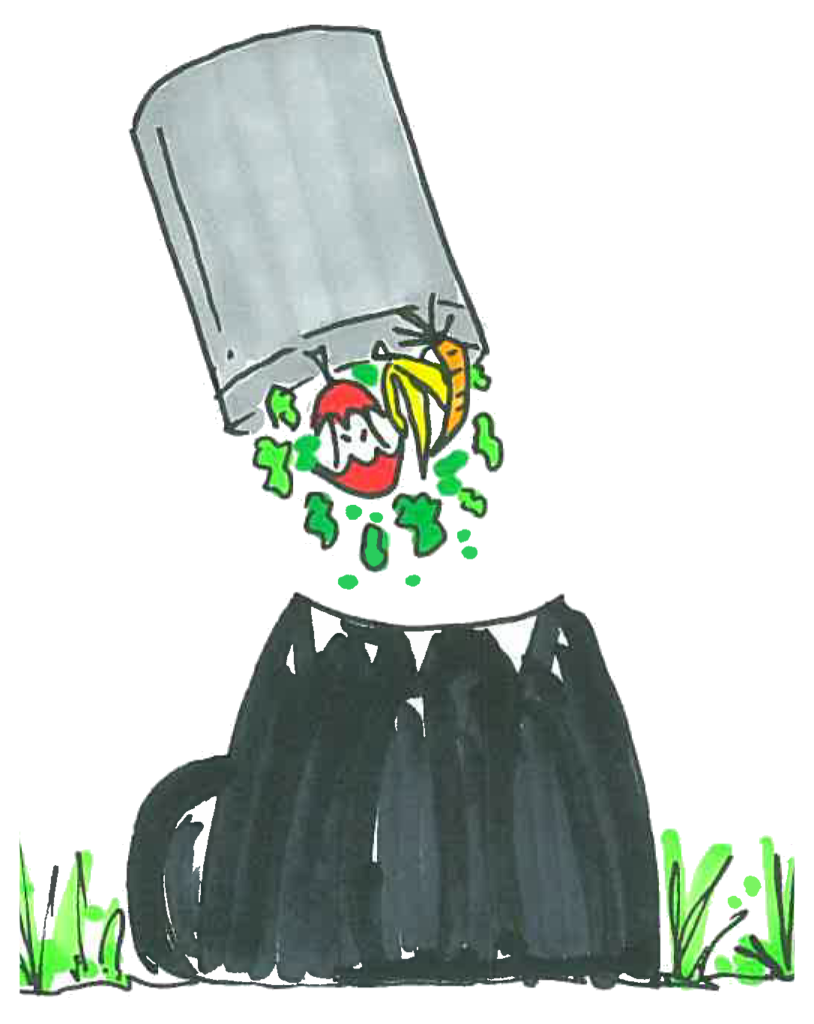
Knowledge and know-how
What is compost?
Simply put, compost is what you get when organic material (like food scraps and garden waste) decomposes properly. It’s a nutrient rich, dirt-like material that can be used to enrich soil and help plants grow.
Microorganisms, such as bacteria and fungi. and larger soil animals, such as earthworms, decompose organic matter and transform it into compost. Decomposition of organic matter releases nutrients and minerals, meaning that when compost is applied to the soil, the nutrients and minerals are available to support new plant growth and food production.
Compost is instrumental to soil health as it improves nutrient cycling, water retention, soil structure and aeration.
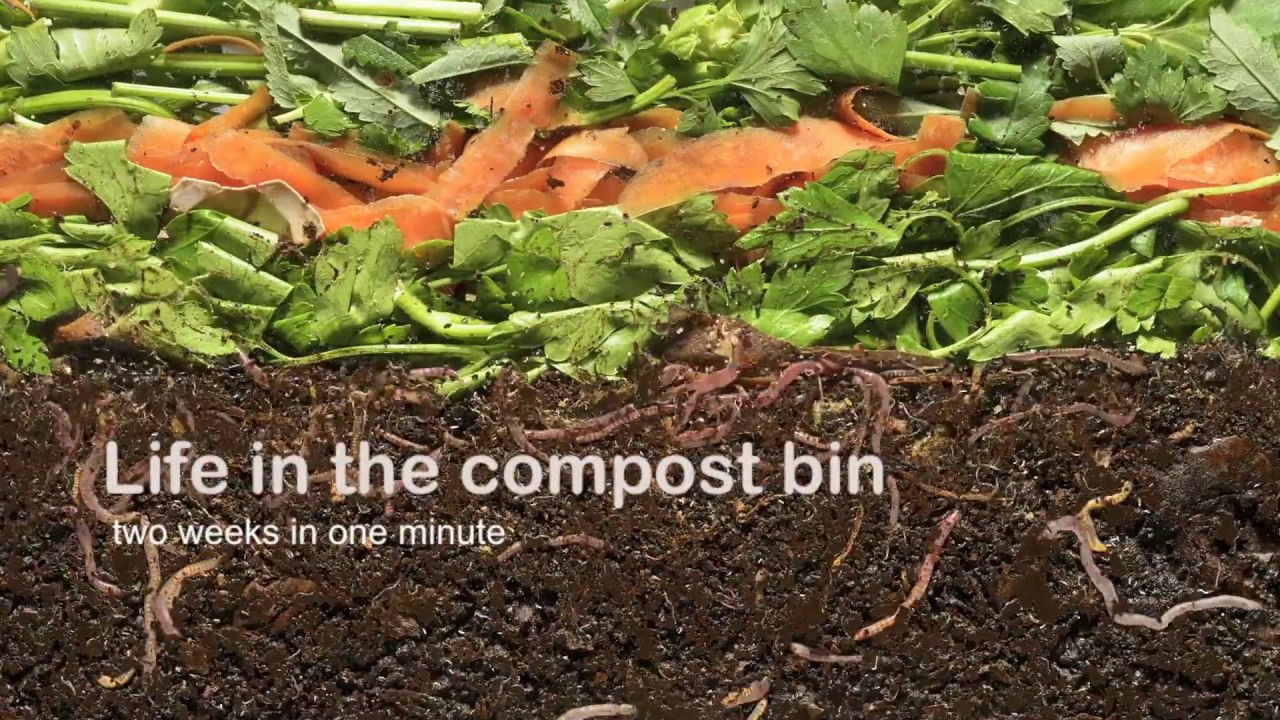
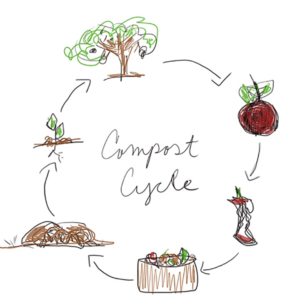
Compost returned to agricultural soils therefore represents an environmentally preferable solution to depositing organic matter in landfill, where it emits powerful greenhouse gases, such as methane, rather than contributing to a healthy food growing environment. All nutrients and minerals lost by dumping food in landfill can be recycled and made reusable through a composting process. Therefore, a circular food economy recommends recycling organic materials in institutions, on farms, by companies, restaurants and other food outlets to prevent food waste from entering landfill. For community projects a key initial objective is to reduce the organic waste content in general waste bins to zero.
How does composting work?
Composting is not the same as simply leaving food waste in a pile to decompose. Rather, the composting process is specifically designed to create perfectly balanced living conditions for beneficial microorganisms and animals to flourish thereby creating healthy soils. To achieve the right conditions the following factors must be taken into account and maintained in a healthy balance within the composting process:
- Mix/balance of green and brown materials;
- Right level of moisture;
- Availability of oxygen (aerobic); and
- Regular turning or stirring of compost.
If any of these four elements are out of balance, the compost may cease to function properly and a process of rotting may set in. Some indicators of malfunction could be:
- Too dry – not enough or inactivated bacteria, composting process stops;
- Too wet – lack of oxygen, compost turns anaerobic while emitting foul odours;
- Too much green material – compost turns acidic and wet;
- Too much brown material – compost turns dry and stagnates;
- Lack of oxygen – compost turns anaerobic and rots while emitting foul odours; and
- Lack of turning/stirring – compost compacts, reduced ability for oxygen to flow, rotting in some places.
Detailed instructions and knowledge on how to compost and how to troubleshoot are widely available in the public domain. There are different methods to manage the composting process, including:
- Open compost piles;
- Bottomless compost bins of different volume that sit directly on the ground;
- Compost barrels or tumblers that often have two chambers, one for fresh composting material and one for maturing and resting compost;
- Worm farms that facilitate the composting process with worms; and
- Bokashi bins that use grains and fermentation to accelerate the composting process.
All these methods have different advantages and disadvantages, as shown in the table below:
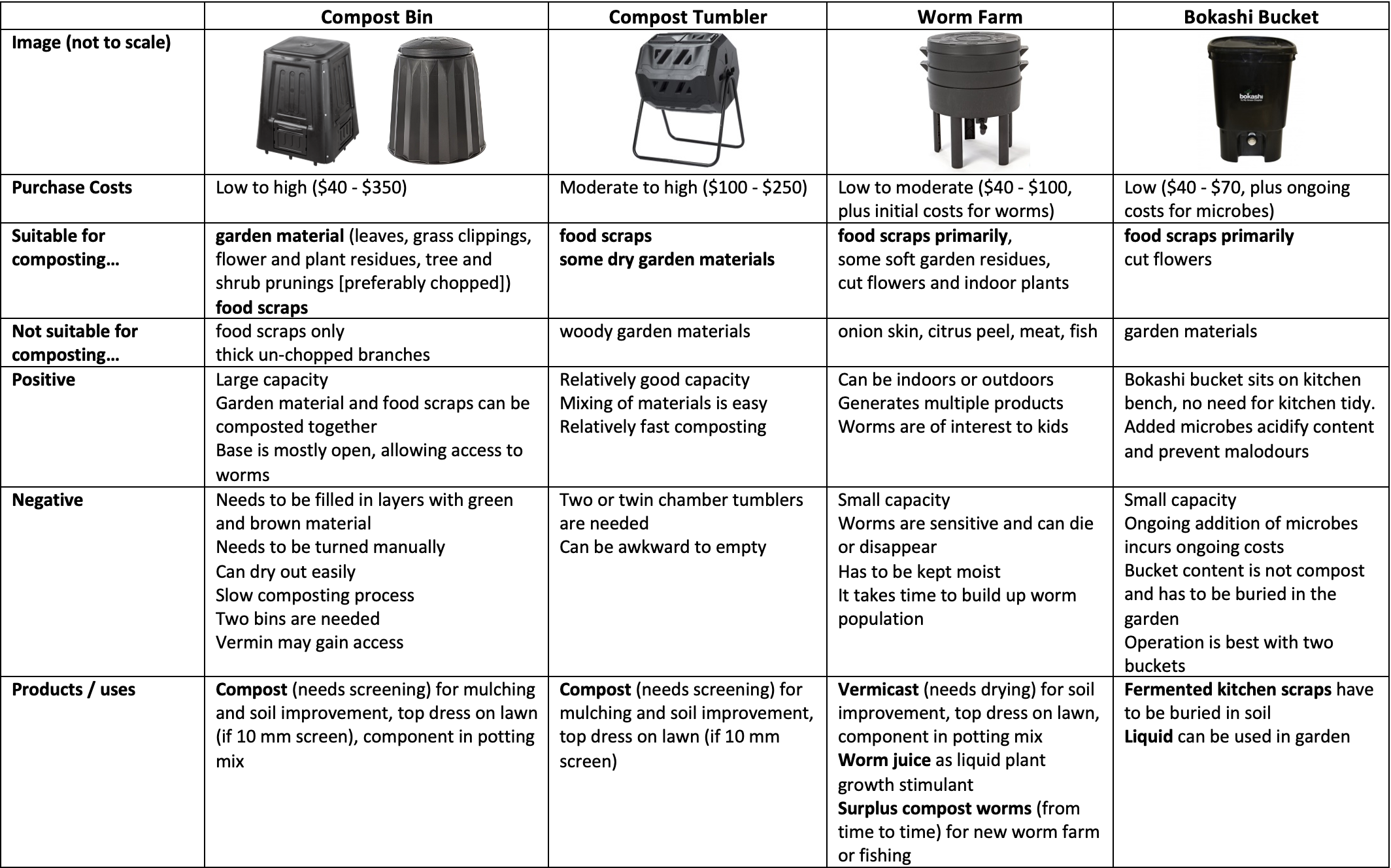
The pictures below show a selection of different compost bins around the school yard at Yarrabilba SSC, including a tumbler and regular compost bins of various sizes. We’ve also included some photos of the YSSC students’ antics with the bins!
What materials can be used to make compost?
Most food scraps can be collected and used for growing fresh vegetables, herbs or fruits around your home or in your community. This may also include spoiled food and leftovers such as mouldy bread or fruit, boiled potatoes and vegetables, rice or pasta, salads and sandwiches. However, leftover meat, sausages, fish, dairy products (cheese, yoghurt, sour cream, etc.) and liquids (gravy, oil, milk, sauces) should not be added to compost as they become easily putrid and smelly, and attract unwanted animals and vermin.
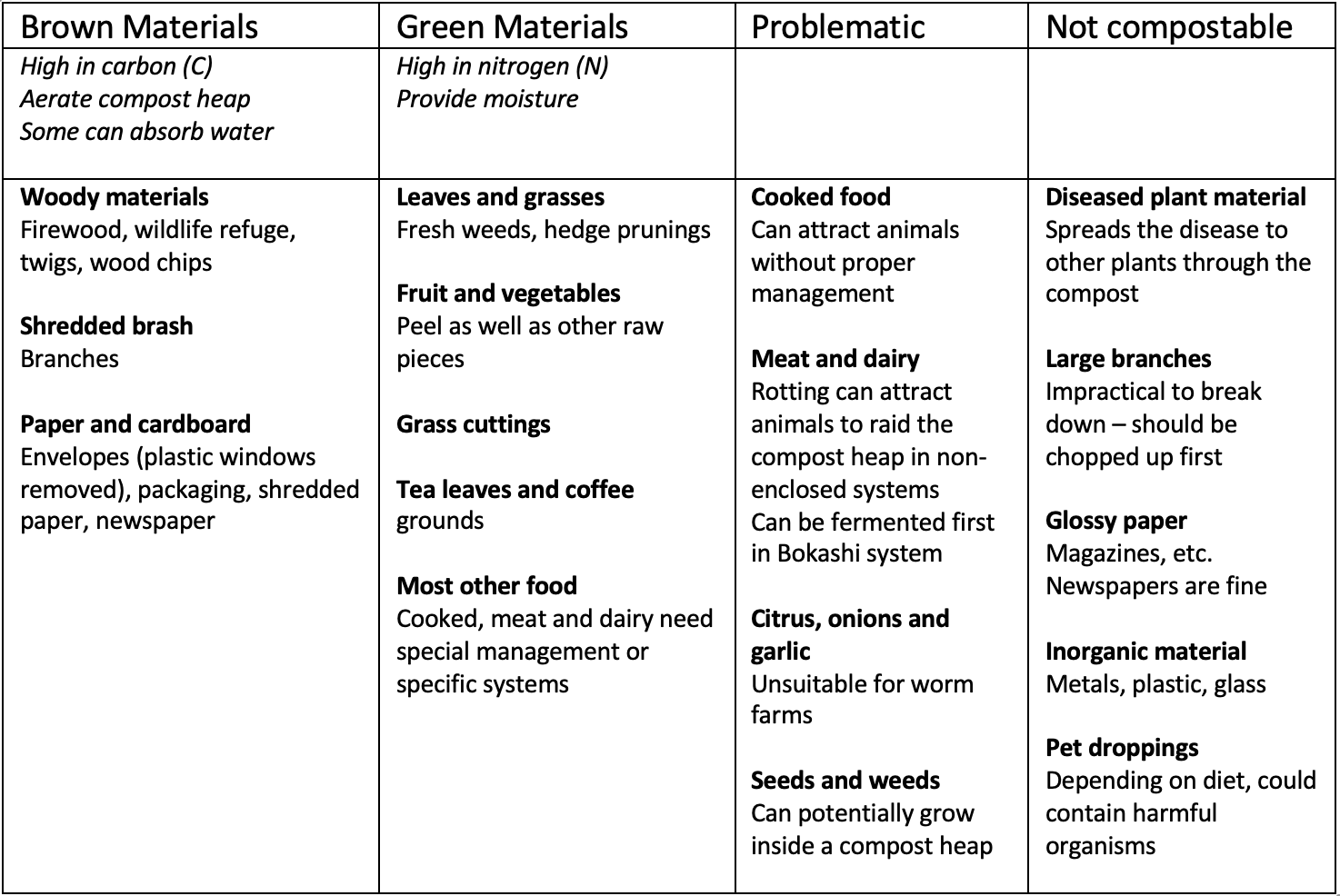
As a rule of thumb, green and brown materials may be added in equal amounts. This requires some adjustment as different materials added to the compost may have a specific carbon to nitrogen ratio. In general, whenever food waste is added to the compost, add the same amount of mulch or dry leaves or other brown materials listed in the above table.
When is compost ready to use?
Compost goes through different phases, which are characterised by the presence of different microbes and different temperature. Compost starts at ambient temperature and quickly enters a hot phase, followed by a curing phase and a cooling and maturing phase. Once animal life and activity inside the compost bin is visibly reduced, the compost matter has turned into brown and even granular soil-like matter and the temperature is more less ambient, the compost may be ready for use. Once compost is ready it will have a natural, fresh and earthy smell, like healthy soil after a bit of rainfall.
Ready compost can be stored in separate piles and doesn’t need to be used immediately. There is also no need to turn ready compost any more as it is relatively stable and doesn’t require the addition of more oxygen. Garden compost can be applied directly to garden beds, wicking beds, lawn. It can also be added to growing soil or used as mulch.
For additional information about composting, you can refer to “how to compost” information sites on the internet, such as Clever Composting and Composting Really Can Be Simple from the (Australian) ABC. There are also various composting tutorial videos on the internet such as Lazy Composting and How To Make Compost. Also, wherever you are located, you can check your local council website: for example, the Compost page on the Brisbane City Council website.
Activities
Trying out different methods to start a compost process
Objective: Gain practical understanding of different composting methods, observe differences in type of materials, their addition, compost maintenance and end-product of the composting process.
- Provide equipment for different compost systems, including bin, barrel, worm farm and pile.
- Divide the class into groups to set-up their compost process as a group exercise supported by the teacher.
- Once the initial set-up is complete, let every group present their compost project.
- When moving on to maintenance, rotate groups so every student has an opportunity to work with different methods.
Items to discuss during this activity are:
- How much space do we need for each composting solution?
- What materials can go into the compost?
- Where should be place the compost bin? Why?
- How often do we have to attend to the different compost bin?
Develop a routine for regular compost maintenance, and troubleshooting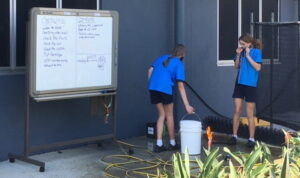
Objective: learn how to manage, maintain and troubleshoot your own compost.
To produce healthy compost regular maintenance is essential. Develop a roster of tasks and names and write them on a board which is placed in the garden area.
Items to discuss during this activity are:
- How to check the compost? (moisture, temperature, odour, optical appearance, animal life)
- Are we still adding waste to the compost or is it now resting and maturing? Why do we have to stop adding new materials at one point?
- Is the compost ready?
- How to use the ready compost?
The potential problems to troubleshoot are:
- Too dry – add moisture
- Too wet – add brown matter, dry out wetness
- Too much green or brown materials – compensate and balance
- Lack of oxygen – rotate barrel or turn compost
- Bad smell – reduce moisture, increase oxygen, add brown materials
